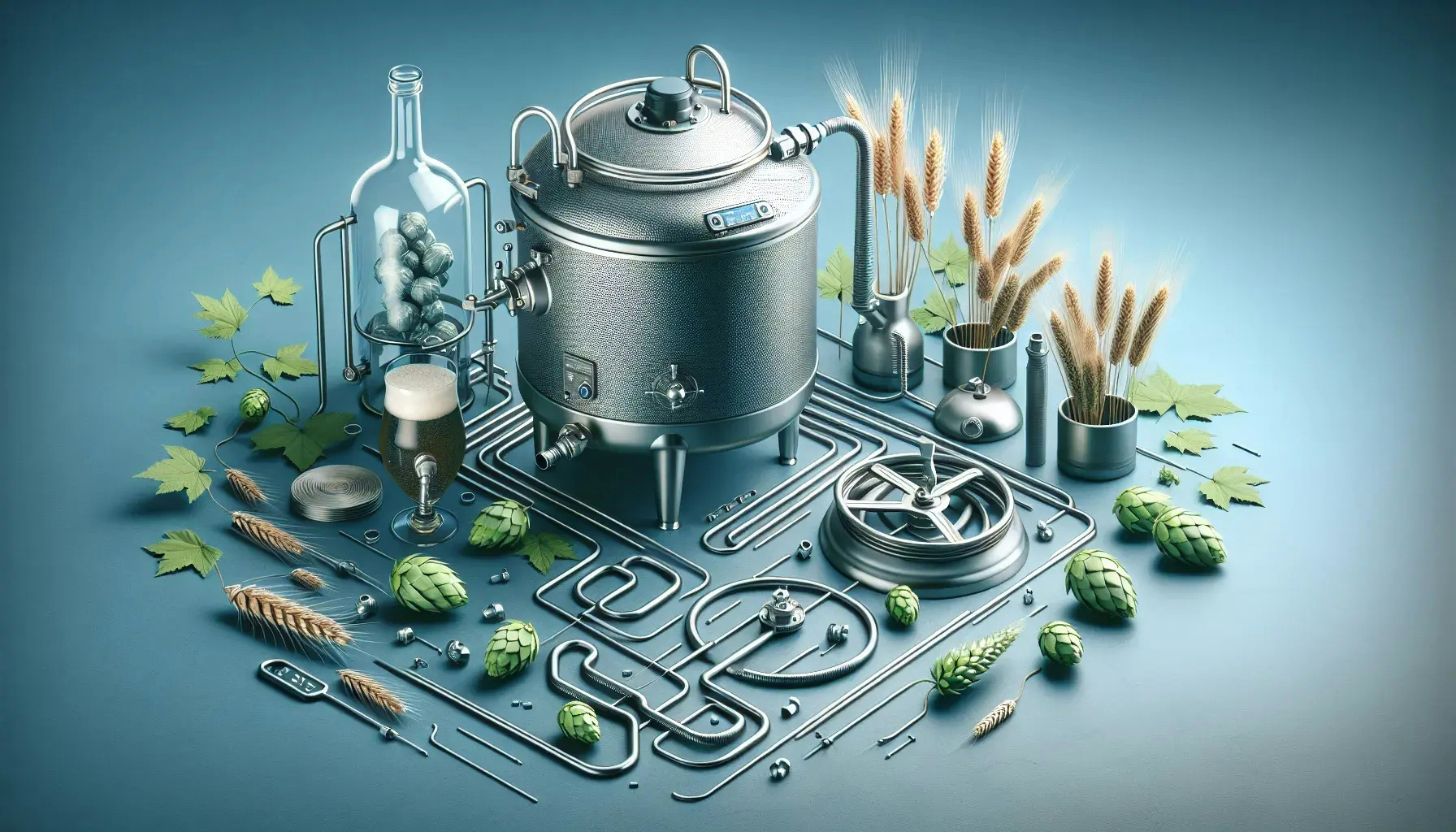Welcome to a deep dive into the fascinating world of brewing. This post will explore the intricate relationship between temperature and brewing processes, and how these elements influence the final product. We'll delve into the science behind brewing, the role temperature plays in different stages, and how slight changes can dramatically alter the outcome. Whether you're a seasoned brewer or a curious novice, this comprehensive guide will provide valuable insights into the art and science of brewing.
The Science Behind Brewing: An Overview
Brewing is a complex process that involves a series of chemical reactions. Each step, from mashing to fermentation, is influenced by temperature. The mashing process, for instance, involves the conversion of starches into fermentable sugars. This conversion is catalyzed by enzymes that operate optimally at specific temperatures.
A slight deviation from the optimal temperature can affect the enzyme's efficiency, altering the sugar profile of the wort. This, in turn, influences the alcohol content and flavor of the final product. Similarly, during the boiling stage, temperature plays a crucial role in hop utilization and wort sterilization.
The fermentation stage is another critical phase where temperature exerts significant influence. Yeast, the microorganism responsible for fermentation, is sensitive to temperature changes. Different yeast strains have varying temperature ranges within which they perform optimally.
Temperature control during fermentation is crucial as it affects yeast health and activity, influencing the rate of fermentation and the production of flavor compounds. In the following sections, we will delve deeper into each of these stages, exploring how temperature impacts the brewing process and outcomes.
Mashing and the Role of Temperature
Mashing is the first step in the brewing process where temperature plays a significant role. During mashing, malted grains are soaked in hot water to activate enzymes that convert starches into fermentable sugars.
The two primary enzymes involved in this process are alpha-amylase and beta-amylase. Alpha-amylase operates optimally at higher temperatures, between 158 to 167 degrees Fahrenheit, and produces unfermentable sugars that contribute to the beer's body and sweetness. Beta-amylase, on the other hand, works best at lower temperatures, between 131 to 150 degrees Fahrenheit, and produces fermentable sugars that contribute to the alcohol content.
Maintaining the right temperature during mashing is crucial as it determines the sugar profile of the wort, influencing the beer's body, sweetness, and alcohol content. A higher mash temperature favors alpha-amylase activity, resulting in a beer with more body and sweetness but lower alcohol content. Conversely, a lower mash temperature favors beta-amylase, leading to a beer with higher alcohol content but less body and sweetness.
Boiling and the Impact of Temperature
After mashing, the wort is boiled, serving multiple purposes. Boiling sterilizes the wort, halts enzymatic activity, and facilitates the extraction of bittering, flavoring, and aroma compounds from hops.
The boiling point of water, 212 degrees Fahrenheit at sea level, is the standard temperature for this stage. However, the boiling point can vary depending on altitude, with higher altitudes having lower boiling points due to decreased atmospheric pressure.
The temperature during boiling influences hop utilization. Higher temperatures result in more efficient extraction of bittering compounds from hops. However, boiling also drives off volatile aroma compounds. Therefore, hops added early in the boil contribute more to bitterness, while hops added later contribute more to aroma.
Temperature control during boiling is essential to achieve the desired balance of bitterness and aroma in the final product.
Fermentation and the Influence of Temperature
Fermentation is the stage where yeast converts the fermentable sugars in the wort into alcohol, carbon dioxide, and flavor compounds. The temperature during fermentation has a profound impact on yeast health and activity, and consequently, the rate of fermentation and the flavor profile of the beer.
Different yeast strains have varying optimal temperature ranges. Ale yeasts typically ferment best between 60 to 75 degrees Fahrenheit, while lager yeasts prefer cooler temperatures, between 45 to 55 degrees Fahrenheit.
Fermenting at temperatures above the optimal range can stress the yeast, leading to faster fermentation but also the production of off-flavors. On the other hand, fermenting at temperatures below the optimal range can slow down or even halt fermentation.
Maintaining the right temperature during fermentation is crucial to ensure healthy yeast activity, optimal fermentation rate, and desirable flavor production.
Conditioning and the Effect of Temperature
After primary fermentation, the beer undergoes a conditioning or lagering phase. During this stage, residual sugars are fermented, and the beer matures and develops its full flavor profile.
Temperature control during conditioning is essential. Lower temperatures are preferred, typically between 32 to 45 degrees Fahrenheit, as they promote the settling of yeast and other particulates, resulting in clearer beer.
Moreover, lower temperatures slow down chemical reactions, allowing the beer to mature at a controlled pace and develop a more refined flavor profile. Conditioning at higher temperatures can lead to the development of off-flavors and a less stable final product.
Packaging and the Importance of Temperature
The final stage of the brewing process is packaging, which includes filling the beer into bottles, cans, or kegs. Even at this stage, temperature plays a significant role.
Beer should be packaged at low temperatures, typically around 32 degrees Fahrenheit, to minimize the risk of oxidation. Oxidation can lead to off-flavors and spoilage, compromising the quality of the beer.
Moreover, lower temperatures reduce the solubility of oxygen and carbon dioxide in the beer, helping to maintain the right level of carbonation.
The Crucial Role of Temperature in Brewing
As we've explored, temperature exerts a profound influence on every stage of the brewing process, from mashing to packaging. It affects enzymatic activity, hop utilization, yeast health and activity, and the maturation of the beer. Understanding and controlling temperature is crucial to achieving the desired outcomes in terms of alcohol content, flavor profile, clarity, and stability. Whether you're a professional brewer or a homebrew enthusiast, mastering the art of temperature control can elevate your brewing skills to new heights.

